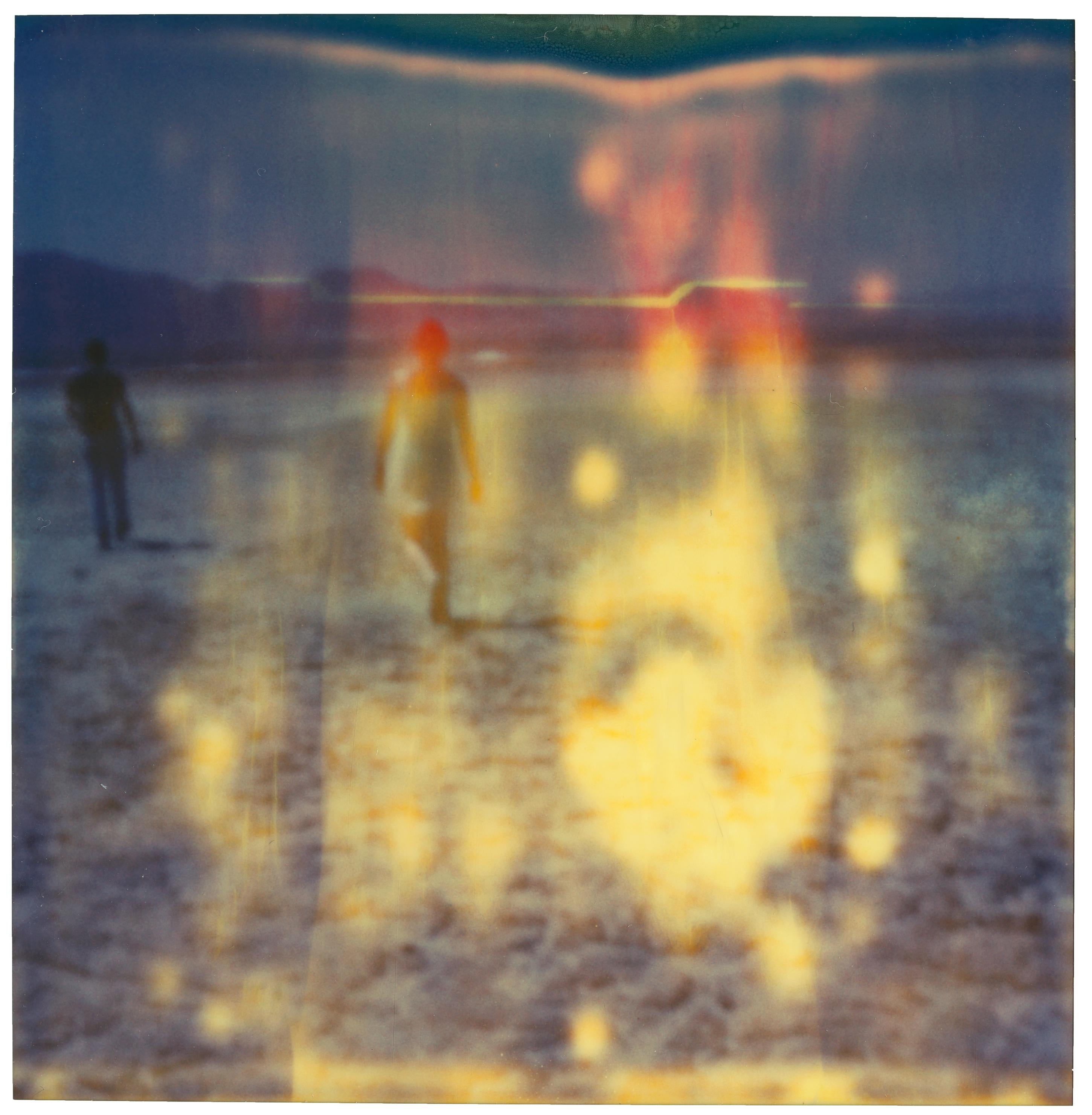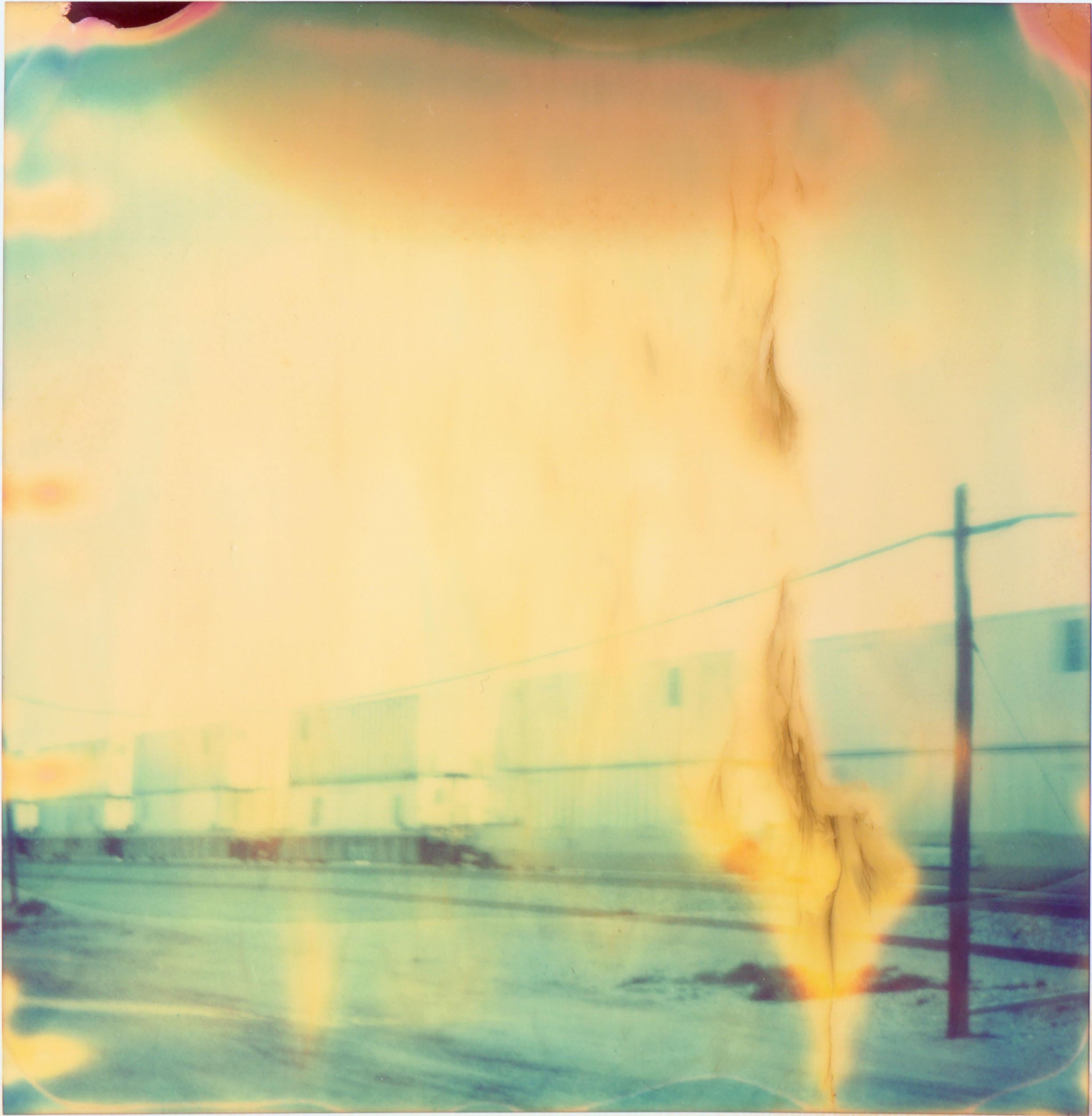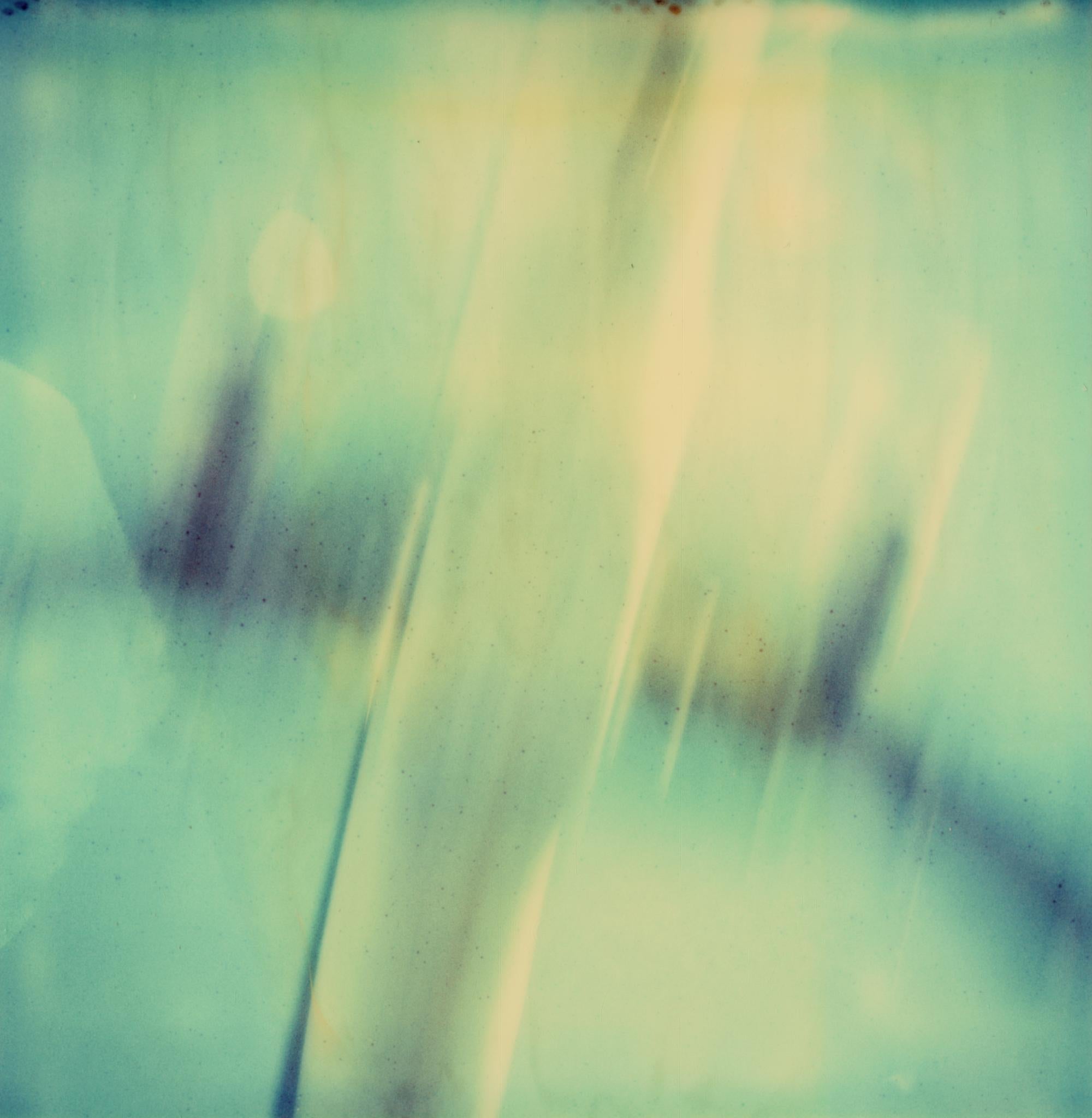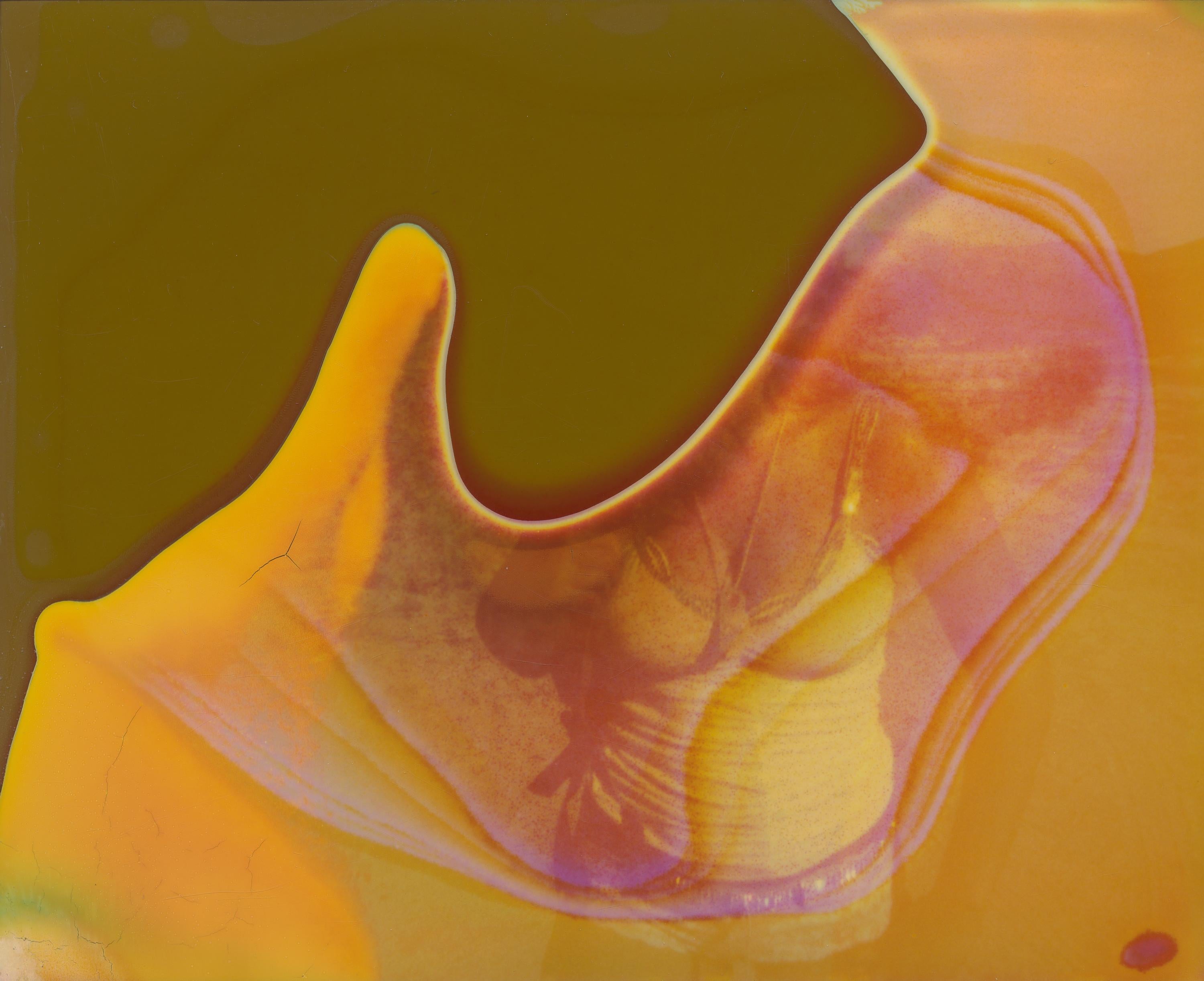Items Similar to The Girl - Planet of the Apes 09 - 21st Century, Polaroid, Abstract
Want more images or videos?
Request additional images or videos from the seller
1 of 5
Stefanie SchneiderThe Girl - Planet of the Apes 09 - 21st Century, Polaroid, Abstract1999
1999
About the Item
The Girl - Planet of the Apes 09 - 1999
48x47cm,
Edition of 10 plus 2 Artist Proofs.
Archival C-Print, based on the original Polaroid.
Signature label and Certificate.
Artist Inventory No. 20448.
Not mounted.
Published in the catalog for the group exhibition 'Night On Earth', Städtischen Ausstellungshalle am Hawerkamp, Münster, April - Mai, 2001
Ralf Christofori - aus dem Katalog "Night On Earth" zur gleichnamigen Ausstellung in der Städtischen Ausstellungshalle am Hawerkamp,
Münster, April - Mai, 2001
Stefanie Schneider's photographs are reminiscent of scintillating situations located on the edge between daydreams and sleeping dreams. All of the scenes she has shot in the South West of the USA seem surreally enraptured, and the artist herself seems only to act inasmuch as she gives the decisive impulse. The people who are photographed are no more tangible than the motives for their activities or the storylines of the photo sequences.
Atmospheric disturbances are in Stefanie Schneider's work the result of a narrative arrangement, which forces the viewer in between visual mementos and gaps in memories. But simultaneously the artist is working no less purposefully with media, and although their own momentum is calculable, the material that is introduced is largely uncontrollable: the best-before date on the Polaroid film pack has long since expired; the photo-chemical self-developing process takes the exposure and alienates.
This dysfunction is a fundamental element in the artist's work Mind Screen, which consists of several parts. She confronts the brittleness of the real, the genuine and the comprehensible with a magical realism dipped in chimaeras to produce dreamlike sequences. And she leaves the content of a presumed storyline up to the viewer. There is no user's manual here for people to follow: in its place, everything succumbs to the draw of these unreal, shimmering scenes, the Fata Morgana of a road movie, an act of violence or a tragic self-sacrifice. Film genres are brought in and taken away in the same breath. Wim Wenders' Paris, Texas turns out to have been shot through a rose-tinted lens, Thelma and Louise proves to be a popular ditty about a heroic mass mobilisation, whilst The Good, the Bad and the Ugly mutually destroy themselves. Things shimmer and flicker before our eyes: we are unable to step out of this dream, nor are we able to verify it.
- Creator:Stefanie Schneider (1968, German)
- Creation Year:1999
- Dimensions:Height: 18.9 in (48 cm)Width: 18.51 in (47 cm)Depth: 0.04 in (1 mm)
- Medium:
- Movement & Style:
- Period:
- Condition:
- Gallery Location:Morongo Valley, CA
- Reference Number:1stDibs: LU652314121752
Stefanie Schneider
Stefanie Schneider received her MFA in Communication Design at the Folkwang Schule Essen, Germany. Her work has been shown at the Museum for Photography, Braunschweig, Museum für Kommunikation, Berlin, the Institut für Neue Medien, Frankfurt, the Nassauischer Kunstverein, Wiesbaden, Kunstverein Bielefeld, Museum für Moderne Kunst Passau, Les Rencontres d'Arles, Foto -Triennale Esslingen., Bombay Beach Biennale 2018, 2019.
About the Seller
4.9
Platinum Seller
These expertly vetted sellers are 1stDibs' most experienced sellers and are rated highest by our customers.
Established in 1996
1stDibs seller since 2017
955 sales on 1stDibs
Typical response time: 4 hours
- ShippingRetrieving quote...Ships From: Morongo Valley, CA
- Return PolicyA return for this item may be initiated within 7 days of delivery.
More From This SellerView All
- Day for Night - Mindscreen 11 - Contemporary, 21st Century, Polaroid, AbstractBy Stefanie SchneiderLocated in Morongo Valley, CADay for Night - Mindscreen 11 (Night on Earth), 1999 58x56cm, Edition 5/10. Analog C-Print, hand-printed by the artist, based on an original expired Polaroid. Signature label and C...Category
1990s Contemporary Color Photography
MaterialsArchival Paper, Photographic Paper, C Print, Color, Polaroid
- Untitled (Traintracks) - based on a PolaroidBy Stefanie SchneiderLocated in Morongo Valley, CAUntitled (Traintracks) - The last Picture Show - 2004 38x37cm. Edition of 5, plus 2 Artist Proofs. Archival C-Print, based on a Polaroid. Signature label and Certificate. Artist...Category
Early 2000s Contemporary Abstract Photography
MaterialsArchival Paper, Photographic Paper, C Print, Color, Polaroid
- Planes VIIBy Stefanie SchneiderLocated in Morongo Valley, CAPlanes VII - 2008 50x50cm, Edition of 10, plus 2 Artist Proofs. Archival C-Print, based on a Polaroid. Signature label and Certificate. Artist Inventory #4650. Not mounted. A...Category
Early 2000s Contemporary Color Photography
MaterialsArchival Paper, Photographic Paper, C Print, Color, Polaroid
- Living in a Dream (Till Death do us Part) - Contemporary, Polaroid, WomenBy Stefanie SchneiderLocated in Morongo Valley, CALiving in a Dream (Till Death do us Part) - 2005 20x20cm, Edition of 10, Archival C-Print print, based on the Polaroid. Certificate and Signature label, artist Inventory No. 9781. Not mounted. on offer is a piece from the movie "Till Death do us Part" Stefanie Schneider’s Till Death Do Us Part or “There is Only the Desert for You.” BY DREW HAMMOND Stefanie Schneider’s Til Death to Us Part is a love narrative that comprises three elements: 1. A montage of still images shot and elaborated by means of her signature technique of using Polaroid formats with outdated and degraded film stock in natural light, with the resulting im ages rephotographed (by other means) enlarged and printed in such a way as to generate further distortions of the image. 2. Dated Super 8 film footage without a sound track and developed by the artist. 3. Recorded off-screen narration of texts written by the actors or photographic subjects, and selected by the artist. At the outset, this method presupposes a tension between still and moving image; between the conventions about the juxtaposition of such images in a moving image presentation; and, and a further tension between the work’s juxtaposition of sound and image, and the conventional relationship between sound and image that occurs in the majority of films. But Till Death Do Us Part also conduces to an implied synthesis of still and moving image by the manner in which the artist edits or cuts the work. First, she imposes a rigorous criterion of selection, whether to render a section as a still or moving image. The predominance of still images is neither an arbitrary residue of her background as a still photographer—in fact she has years of background in film projects; nor is it a capricious reaction against moving picture convention that demands more moving images than stills. Instead, the number of still images has a direct thematic relation to the fabric of the love story in the following sense. Stills, by definition, have a very different relationship to time than do moving images. The unedited moving shot occurs in real time, and the edited moving shot, despite its artificial rendering of time, all too 2009often affords the viewer an even greater illusion of experiencing reality as it unfolds. It is self-evident that moving images overtly mimic the temporal dynamic of reality. Frozen in time—at least overtly—still photographic images pose a radical tension with real time. This tension is all the more heightened by their “real” content, by the recording aspect of their constitution. But precisely because they seem to suspend time, they more naturally evoke a sense of the past and of its inherent nostalgia. In this way, they are often more readily evocative of other states of experience of the real, if we properly include in the real our own experience of the past through memory, and its inherent emotions. This attribute of stills is the real criterion of their selection in Til Death Do Us Part where consistently, the artist associates them with desire, dream, memory, passion, and the ensemble of mental states that accompany a love relationship in its nascent, mature, and declining aspects. A SYNTHESIS OF MOVING AND STILL IMAGES BOTH FORMAL AND CONCEPTUAL It is noteworthy that, after a transition from a still image to a moving image, as soon as the viewer expects the movement to continue, there is a “logical” cut that we expect to result in another moving image, not only because of its mise en scène, but also because of its implicit respect of traditional rules of film editing, its planarity, its sight line, its treatment of 3D space—all these lead us to expect that the successive shot, as it is revealed, is bound to be another moving image. But contrary to our expectation, and in delayed reaction, we are startled to find that it is another still image. One effect of this technique is to reinforce the tension between still and moving image by means of surprise. But in another sense, the technique reminds us that, in film, the moving image is also a succession of stills that only generate an illusion of movement. Although it is a fact that here the artist employs Super 8 footage, in principle, even were the moving images shot with video, the fact would remain since video images are all reducible to a series of discrete still images no matter how “seamless” the transitions between them. Yet a third effect of the technique has to do with its temporal implication. Often art aspires to conflate or otherwise distort time. Here, instead, the juxtaposition poses a tension between two times: the “real time” of the moving image that is by definition associated with reality in its temporal aspect; and the “frozen time” of the still image associated with an altered sense of time in memory and fantasy of the object of desire—not to mention the unreal time of the sense of the monopolization of the gaze conventionally attributed to the photographic medium, but which here is associated as much with the yearning narrator as it is with the viewer. In this way, the work establishes and juxtaposes two times for two levels of consciousness, both for the narrator of the story and, implicitly, for the viewer: A) the immediate experience of reality, and B) the background of reflective effects of reality, such as dream, memory, fantasy, and their inherent compounding of past and present emotions. In addition, the piece advances in the direction of a Gesammtkunstwerk, but in a way that reconsiders this synaesthesia as a unified complex of genres—not only because it uses new media that did not exist when the idea was first enunciated in Wagner’s time, but also because it comprises elements that are not entirely of one artist’s making, but which are subsumed by the work overall. The totality remains the vision of one artist. In this sense, Till Death Do Us Part reveals a further tension between the central intelligence of the artist and the products of other individual participants. This tension is compounded to the degree that the characters’ attributes and narrated statements are part fiction and part reality, part themselves, and part their characters. But Stefanie Schneider is the one who assembles, organizes, and selects them all. THE RELATIONSHIP BETWEEN THIS IDEA (above) AND PHOTOGRAPHY This selective aspect of the work is an expansion of idea of the act of photography in which the artistic photographer selects that which is already there, and then, by distortion, definition or delimitation, compositional and lighting emphasis, and by a host of other techniques, subsumes that which is already there to transform it into an image of the artist’s contrivance, one that is no less of the artist’s making than a work in any other medium, but which is distinct from many traditional media (such as painting) in that it retains an evocation of the tension between what is already there and what is of the artist’s making. Should it fail to achieve this, it remains, to that degree, mere illustration to which aesthetic technique has been applied with greater or lesser skill. The way Til Death Do Us Part expands this basic principle of the photographic act, is to apply it to further existing elements, and, similarly, to transform them. These additional existing elements include written or improvised pieces narrated by their authors in a way that shifts between their own identities and the identities of fictional characters. Such characters derive partially from their own identities by making use of real or imagined memories, dreams, fears of the future, genuine impressions, and emotional responses to unexpected or even banal events. There is also music, with voice and instrumental accompaniment. The music slips between integration with the narrative voices and disjunction, between consistency and tension. At times it would direct the mood, and at other times it would disrupt. Despite that much of this material is made by others, it becomes, like the reality that is the raw material of an art photo, subsumed and transformed by the overall aesthetic act of the manner of its selection, distortion, organization, duration, and emotional effect. * * * David Lean was fond of saying that a love story is most effective in a squalid visual environment. In Til Death Do Us Part, the squalor of the American desert...Category
Early 2000s Contemporary Color Photography
MaterialsArchival Paper, Photographic Paper, C Print, Color, Polaroid
- The Unconscious Mind (29 Palms, CA) - Polaroid, Contemporary, Desert, DreamBy Stefanie SchneiderLocated in Morongo Valley, CAThe Unconscious Mind (29 Palms, CA) - 2021 127x228cm, Edition of 10, Archival C-Print, based on the Polaroid. Certificate and Signature label. Artist Inventory No. 3965. Not m...Category
Early 2000s Contemporary Color Photography
MaterialsArchival Paper, Photographic Paper, C Print, Color, Polaroid
- Impact (Wastelands) - 100x100cm, Polaroid, Contemporary, Abstract, MountedBy Stefanie SchneiderLocated in Morongo Valley, CAImpact - it all began quite simply I was very happy (Wastelands) - 2003 Edition of 5, 100x100cm. Archival C-Print, based on the Polaroid. Artist inventory Number 1189.08. Mounted...Category
Early 2000s Contemporary Color Photography
MaterialsMetal
You May Also Like
- Munich - Contemporary Polaroid Original PhotographBy Pia ClodiLocated in Salzburg, ATMunich - Framed Original Black and White Polaroid Photograph Like much of Pia Clodi's work, 'Munich' leaves a trace of the fast, nomadic life she leads, often depicting the real a...Category
2010s Contemporary Abstract Photography
MaterialsArchival Paper, Photographic Paper, Polaroid
- Blue Ribbon - Portrait Cyanotype Style Film Photographic Print FramedBy Pia ClodiLocated in Salzburg, ATBlue Ribbon - Still Life Black and White Photographic Print Framed Not one to shy away from human representation, Pia Clodi’s more portraiture-like works continually offer the sitte...Category
21st Century and Contemporary Contemporary Abstract Photography
MaterialsPhotographic Film, Photographic Paper, Color, Polaroid
- A Bloomy View - Still Life Polaroid Photographic Print FramedBy Pia ClodiLocated in Salzburg, ATA bloomy view - Polaroid Photographic Print Framed by Pia Clodi The blue tones within her work should not be interpreted as coldness, as her works are full of fleeting moments withi...Category
21st Century and Contemporary Contemporary Abstract Photography
MaterialsPhotographic Film, Photographic Paper, Color, Polaroid
- Blue Ribbon - Portrait Cyanotype Style Film Photographic Print FramedBy Pia ClodiLocated in Salzburg, ATBlue Ribbon - Still Life Black and White Photographic Print Framed Not one to shy away from human representation, Pia Clodi’s more portraiture-like works continually offer the sitte...Category
21st Century and Contemporary Contemporary Abstract Photography
MaterialsPhotographic Film, Photographic Paper, Color, Polaroid
- Buenos Aires - Still Life Cyanotype Style Film Photographic Print FramedBy Pia ClodiLocated in Salzburg, ATBuenos Aires - Still Life Photographic Print Framed by Pia Clodi The blue tones within her work should not be interpreted as coldness, as her works are full of fleeting moments with...Category
21st Century and Contemporary Contemporary Abstract Photography
MaterialsPhotographic Film, Photographic Paper, Color, Polaroid
- Flora Fauna Series Vintage Color Photograph Abstract Flower Fuji Crystal PhotoBy Jeffrey RothsteinLocated in Surfside, FLFLORA & FAUNA SERIES, c.1998, Fuji crystal archive paper. Hand-signed on verso. Photographer Jeffrey Rothstein focuses on different elements within Nature for his subject matter, ra...Category
1990s Contemporary Color Photography
MaterialsPhotographic Paper, C Print






